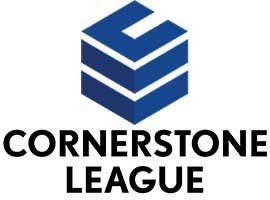
Sink, Swim, or Just Tread Water
“Sinking was never an option.”
In this week’s Cohesion Corner™ with Dr. Troy blog post, I have another excerpt from my book FANNY RULES: A Mother’s Leadership Lessons that Never Grow Old. Make sure to check out the first FANNY RULES blog post called Remember the Dent (click here to read) for the backstory on my mom, aka FANNY, and the teachable moments she imparted on me.
FANNY taught me to expend energy on my strengths, and I want to emphasize this teachable moment to you. Use your talents, resources, and energy to propel yourself forward to attain your goals.
While reading the excerpt, keep in mind the following:
-
Think about your strengths that you could further develop. Now identify your weakness and determine which of your strengths could offset this weakness.
-
Can you think of a time when you ran up against an obstacle and incorrectly focused on your weaknesses in that moment? How could you instead have used your strengths to quickly overcome the obstacles?
-
From a leadership perspective, how can you help your team members identify and further develop their strengths? How can they leverage individual strengths to help the team and the organization?
Expend Energy on Your Strengths
For every strength, there is a weakness, and each vulnerability has a counter-balanced strength. Often, we make a list of each and treat the two as mutually exclusive when, in fact, strengths and weaknesses have a “yin-yang” kind of relationship. This concept of dualism is part of ancient Chinese philosophy. What may appear at first blush to be seemingly opposite forces, these two relatable sets of values exhibit a complementary and connected relationship to one another.
Successful leaders of transformation understand this relational concept between strengths and weaknesses. One effective coaching exercise I use is to have a leader identify one of their strengths. They describe it and give context to why it is a strength and has value. Then I ask, “How can your strength become a weakness?” This thought process uncovers the nuances of both the strengths and weaknesses that may have gone unnoticed. Understanding how strength can slip into weakness provides the leader with access to knowledge that impacts behavior. Then it’s up to the leader to put this information into action.
The same process can be used to further examine a weakness. My inquiry is, “What strength do you have that can offset this particular weakness?” We make a note of the response and use it to drive toward success. It’s not just identifying strengths and weaknesses that make the exercise work. When the leader has access to this valuable information that lies beneath the surface, they now have power. They have even more power when this newfound knowledge is put into action.
When we focus on our strengths, we have an opportunity to move forward. Our strengths help us to improve, to achieve. Our weaknesses can hold us back or keep us stuck in one place. I think of my strengths and weaknesses as relating to the metaphor of sinking, swimming, or treading water. Swimming is working my strengths while treading water is improving a weakness, and sinking, well, you’ve given up.
Imagine you find yourself in the center of a deep body of water, at least deep enough where you can’t see or touch the bottom. You look all around and finally catch a glimpse of land off in the distance. In this scenario, your mind settles on one of three options.
Sink.
Swim.
Tread water.
If you did nothing, the outcome would be to sink, but that’s not how you want the story to end. Instead, you pull yourself together and remember how adept you are at moving your arms and legs. You try a circular motion with your arms while moving your legs like you’re riding an imaginary bike in the water. This technique will help you keep your head above water. However, you remain stationary. Think of this type of movement as if you are working on a weakness. You may even get good at it. Still, you’re not moving forward. Instead, you become really good at staying in one place.
The other option is for you to move your arms and legs into a motion that propels your body forward. You put your head into the water and burst forward as you move your arms and legs. Instead of circular motions with your arms, you propel your arms forward, one after the other, extending them into the water over your head. Your hands pull back toward you, scooping the water. Now, your legs and feet are kicking as if you are taking a brisk walk. You’re working your arms and legs to propel you forward, moving you closer to your goal. This type of action is like focusing on one of your strengths. You improve and fine-tune your strength with each stroke.
Any one of us can expend an equal amount of energy moving our arms and legs, but without the forward motion, we’re still just treading water. When the attention is on a weakness, we may see some improvement. But it’s not necessarily going to produce a result of moving toward our goals. However, when we focus on strengths, we move forward.
Metaphorically speaking, I prefer to swim. Besides, as far as Fanny was concerned, sinking was never an option.
Teachable Moment
If you can expend an equal amount of effort to achieve something positive as you would to stand still, or worse yet attain a negative outcome, then where do you want to spend your time? Focus on your strengths. Every time you develop your strength, your weaknesses naturally get better. But if you only focus on your weaknesses, then your strength remains stagnant.
Every great leaders has strengths, and they have weaknesses that could have kept them treading water. But these leaders overcame their weakness by focusing on their strengths:
-
Bill Gates has admitted to being impatient. He knows this characteristic made it challenging to work with others. He learned to channel his impatience into a drive for innovation and progress.
-
Sheryl Sandberg, the COO of Meta Platforms, has openly discussed her struggles with grief after the sudden loss of her husband. Her personal experience with grief has made her more resilient and able to face adversity head on.
-
Richard Branson, the founder of the Virgin Group, has dyslexia. He struggled with academics during his school years but used his creativity and entrepreneurial spirit to build a successful business empire. He has been open about his learning disability and its impact on his life.
These examples show that even highly accomplished leaders have weaknesses or face personal challenges. However, what sets them apart is their ability to acknowledge these weaknesses, learn from them, and put focus on their strengths instead. It’s a testament to the idea that great leaders are not flawless but are willing to confront their limitations and continue to evolve and improve.
For more insight on this topic, please refer to these blog posts:
For leadership principles that can be applied today, click here to subscribe to Cohesion Corner™ with Dr. Troy!
Interested in reading more from Dr. Troy Hall? Check out my books available for purchase on Amazon: https://www.amazon.com/kindle-dbs/author?ref=dbs_G_A_C&asin=B08HPGVSYB






